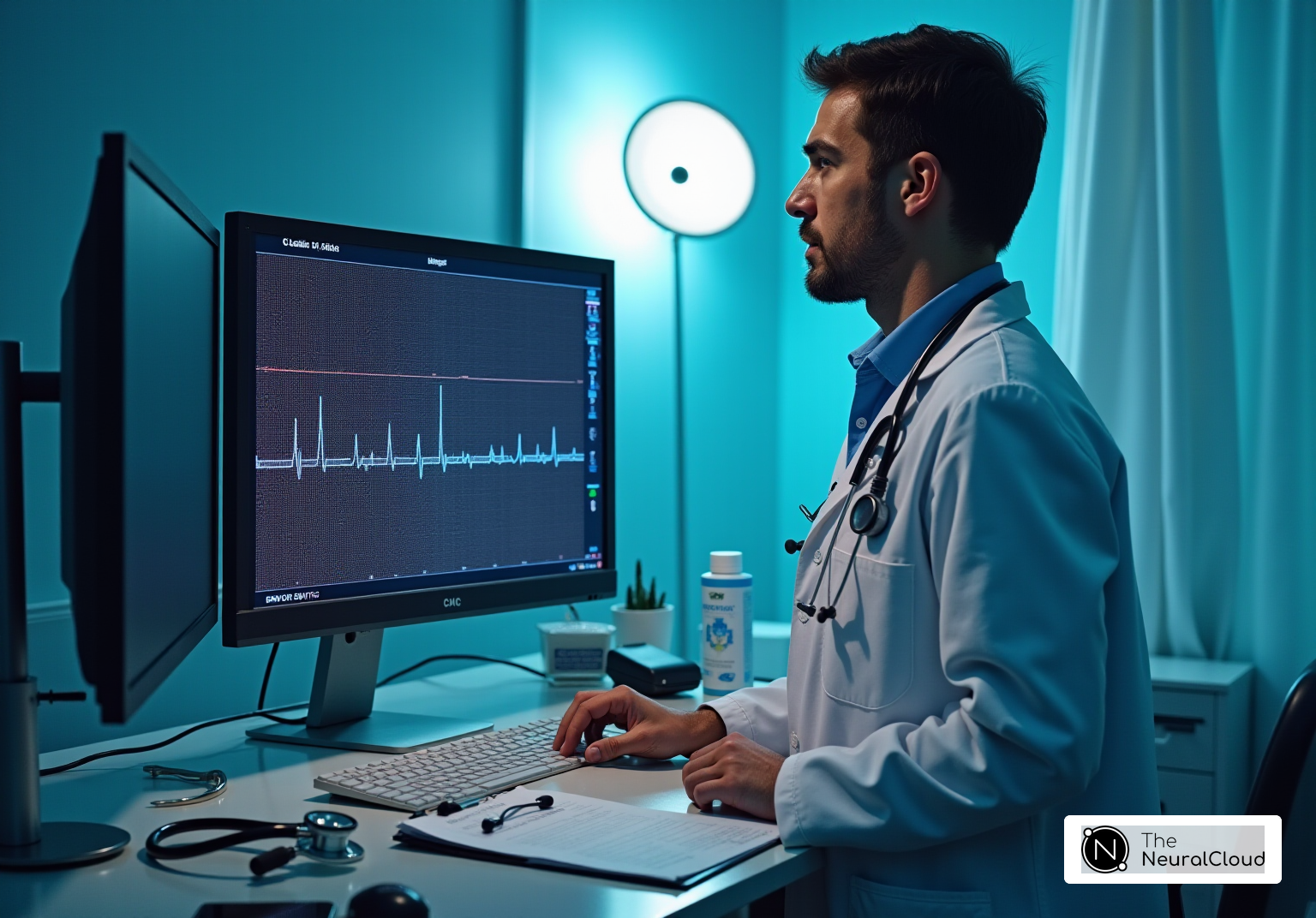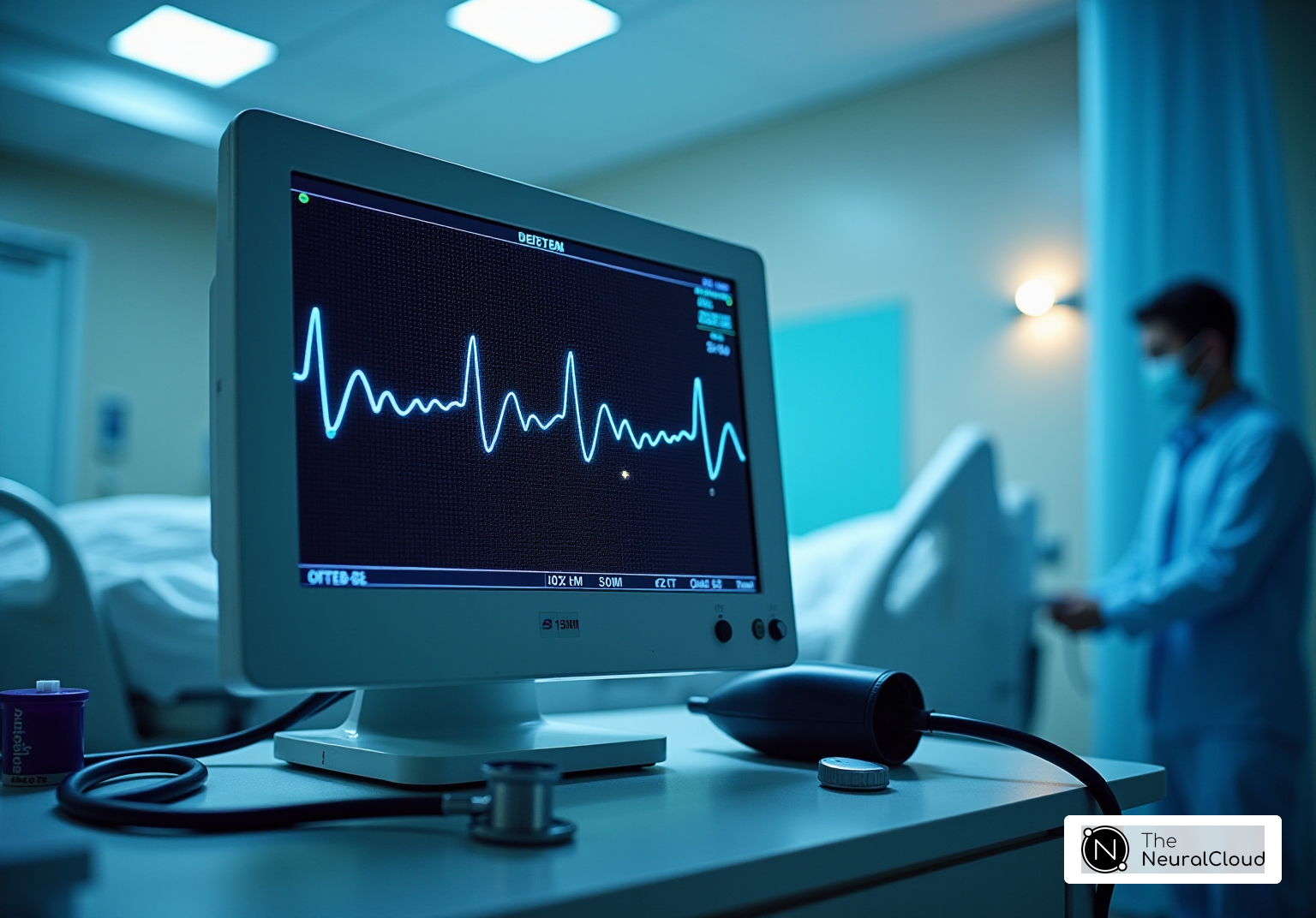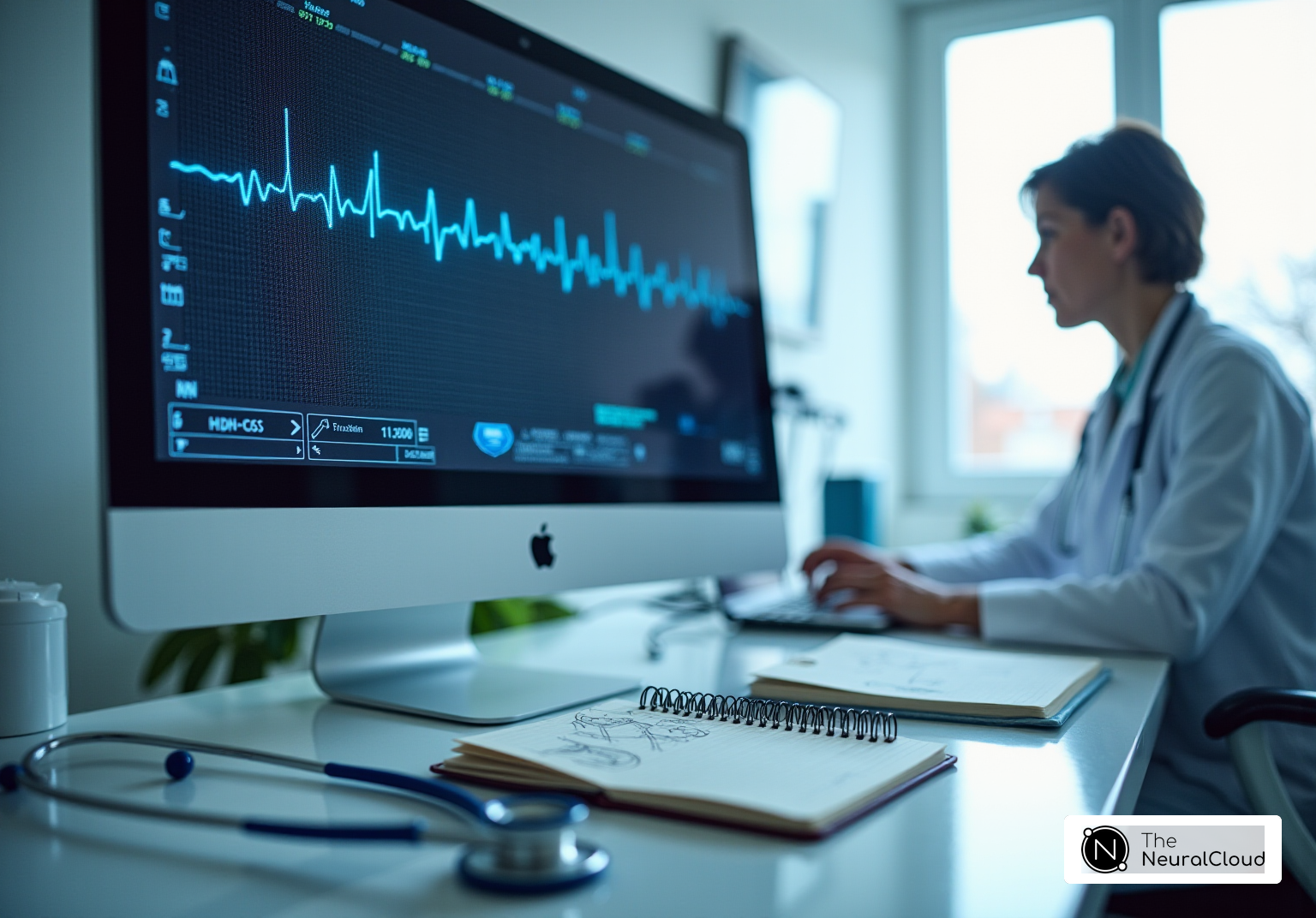Overview
The article emphasizes the critical role of electrocardiography (ECG) for health tech developers, focusing on its significance in diagnosing cardiovascular conditions. It discusses the challenges faced in ECG analysis and highlights the potential for technological innovations to enhance this process. Notably, advancements such as artificial intelligence are presented as key features that can improve the accuracy and efficiency of ECG interpretation.
The advantages of these technological improvements are clear: by leveraging AI, healthcare professionals can achieve better patient outcomes and enhance the overall effectiveness of healthcare delivery. The integration of AI into ECG analysis represents a significant step forward in addressing existing challenges, ultimately benefiting both practitioners and patients alike.
In summary, the article outlines how the intersection of ECG technology and innovative solutions can lead to transformative changes in cardiovascular care, underscoring the importance of continued advancements in this field.
Introduction
The electrocardiogram (ECG) serves as a crucial tool in cardiac health, offering essential insights into the heart's electrical activity. For health tech developers, understanding the complexities of ECG technology is not just an academic exercise; it paves the way for innovative solutions that can revolutionize patient care and improve diagnostic accuracy. As the healthcare landscape evolves with advancements in AI and telemedicine, a pressing challenge arises: how can developers effectively leverage these technologies to enhance ECG analysis and improve patient outcomes amidst growing complexity?
Define ECG: The Basics of Electrocardiography
El ECG, que es una herramienta de diagnóstico médico crucial, registra la actividad eléctrica del corazón a lo largo del tiempo. El ECG que es implica posicionar electrodos en la piel para capturar las señales eléctricas del órgano, resultando en una representación gráfica conocida como electrocardiograma. Esta forma de onda proporciona información esencial sobre el ritmo, tamaño y posición del corazón, lo que lo hace indispensable para diagnosticar diversas condiciones cardiovasculares. Típicamente, un ECG que es se muestra como una serie de ondas, incluyendo ondas P, complejos QRS y ondas T, cada una representando diferentes fases del ciclo eléctrico del corazón.
Globalmente, aproximadamente 400 millones de ECG que es se realizan cada año, destacando la aplicación generalizada del método y su papel crítico en los diagnósticos cardíacos. La capacidad de analizar estas formas de onda de manera eficiente es vital para los desarrolladores de tecnología de salud enfocados en innovar soluciones de monitoreo cardíaco. A medida que continúan surgiendo avances en la tecnología del ECG, la integración de IA y aprendizaje automático, como lo demuestra MaxYield™ de Neural Cloud Solutions, está lista para mejorar la precisión y eficiencia del análisis del ECG. MaxYield™ utiliza filtrado de ruido avanzado y etiquetado automatizado para aclarar las señales del ECG, recuperando efectivamente secciones previamente oscurecidas de grabaciones largas de Holter, 1-Lead y monitores de parche. Esta innovación aborda desafíos como la variabilidad fisiológica y los artefactos de señal, permitiendo a los profesionales de la salud tomar decisiones informadas basadas en información cardíaca confiable.
Los cardiólogos líderes enfatizan la importancia del ECG que es en los diagnósticos, destacando su capacidad para revelar condiciones cardiovasculares estructurales que de otro modo podrían pasar desapercibidas. El Dr. Pierre Elias, Director Médico de Inteligencia Artificial en NewYork-Presbyterian, afirma: "Usando nuestras innovaciones, podríamos convertir los estimados 400 millones de ECG que se realizarán en todo el mundo este año en 400 millones de oportunidades para detectar enfermedades cardíacas estructurales y potencialmente ofrecer tratamientos que salvan vidas en el momento más oportuno." Esto resalta la necesidad de innovación continua en la tecnología del ECG, como los algoritmos adaptativos de MaxYield™, que evolucionan con cada uso para mejorar los resultados de los pacientes y optimizar los flujos de trabajo clínicos. Además, abordar desafíos como el ruido y los artefactos de señal en el análisis del ECG es crucial para mejorar la fiabilidad de los diagnósticos cardíacos.
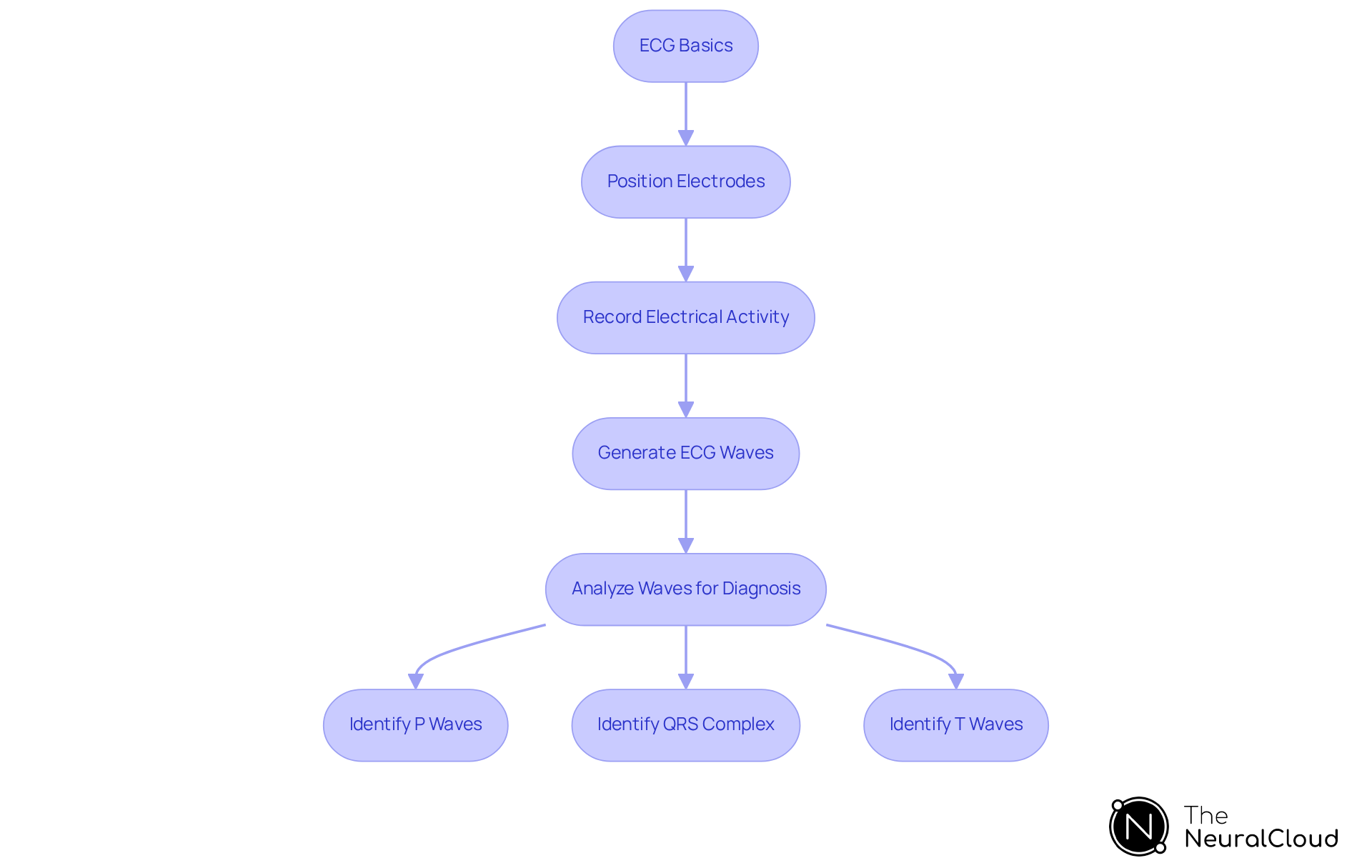
Contextualize ECG: Importance in Cardiac Health Monitoring
The electrocardiogram, or ECG que es, serves as a cornerstone in monitoring cardiac health by providing real-time insights into various conditions such as arrhythmias and myocardial infarctions. For health tech developers, understanding what ECG que es and its pivotal role in the early detection and management of heart diseases is essential. Accurate analysis of ECG que es data enables timely interventions, significantly improving patient outcomes and reducing healthcare costs.
With the increasing adoption of telemedicine and remote patient monitoring (RPM), there is a heightened demand for innovative solutions, specifically regarding ECG que es, that can seamlessly integrate into wearable devices and mobile applications. Research indicates that RPM programs employing ECG methods can lead to a 76% reduction in hospital readmissions for Medicare participants, underscoring the effectiveness of remote monitoring in enhancing patient care.
Furthermore, the remote patient monitoring market is expected to reach USD 4.07 billion by 2030, propelled by the rising prevalence of chronic diseases and an aging population. Consequently, advancing sophisticated methods related to ECG que es is not only timely but crucial for improving healthcare delivery and patient engagement.
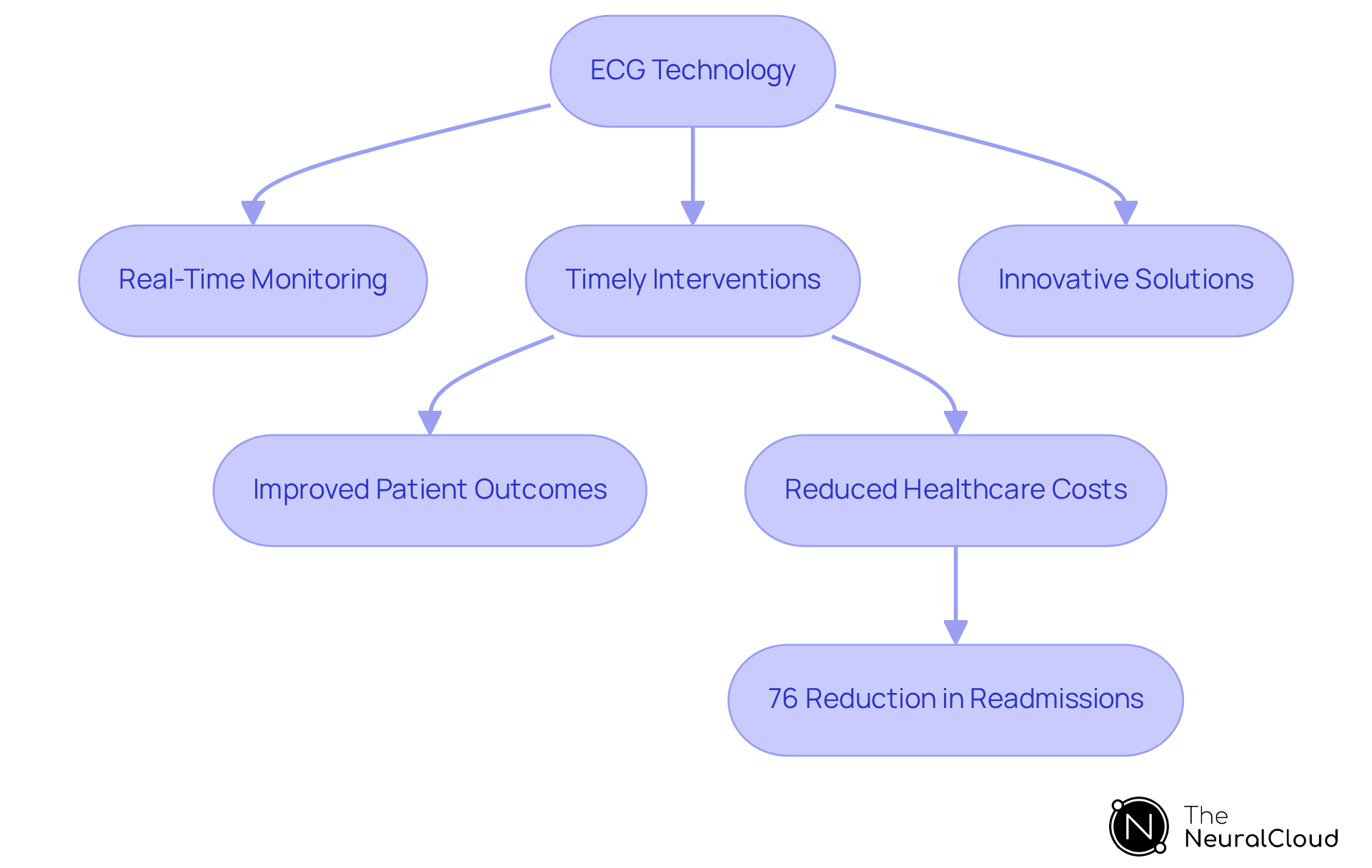
Trace the Origin: Historical Development of ECG Technology
The origins of electrocardiography, which is also referred to as ECG que es, trace back to the late 19th century, marked by the pioneering work of Willem Einthoven, a Dutch physician who developed the first practical ECG machine in 1903. This significant advancement laid the foundation for contemporary ECG technologies, culminating in Einthoven receiving the Nobel Prize in Physiology or Medicine in 1924.
Over the decades, ECG technology has undergone remarkable evolution, transitioning from bulky machines to compact, portable devices. The introduction of digital advancements and artificial intelligence has further revolutionized ECG analysis, allowing for quicker and more precise interpretations.
Understanding this historical context is essential for health tech developers, as it underscores the trajectory of innovation and the immense potential for future advancements in technology, particularly in ECG que es.
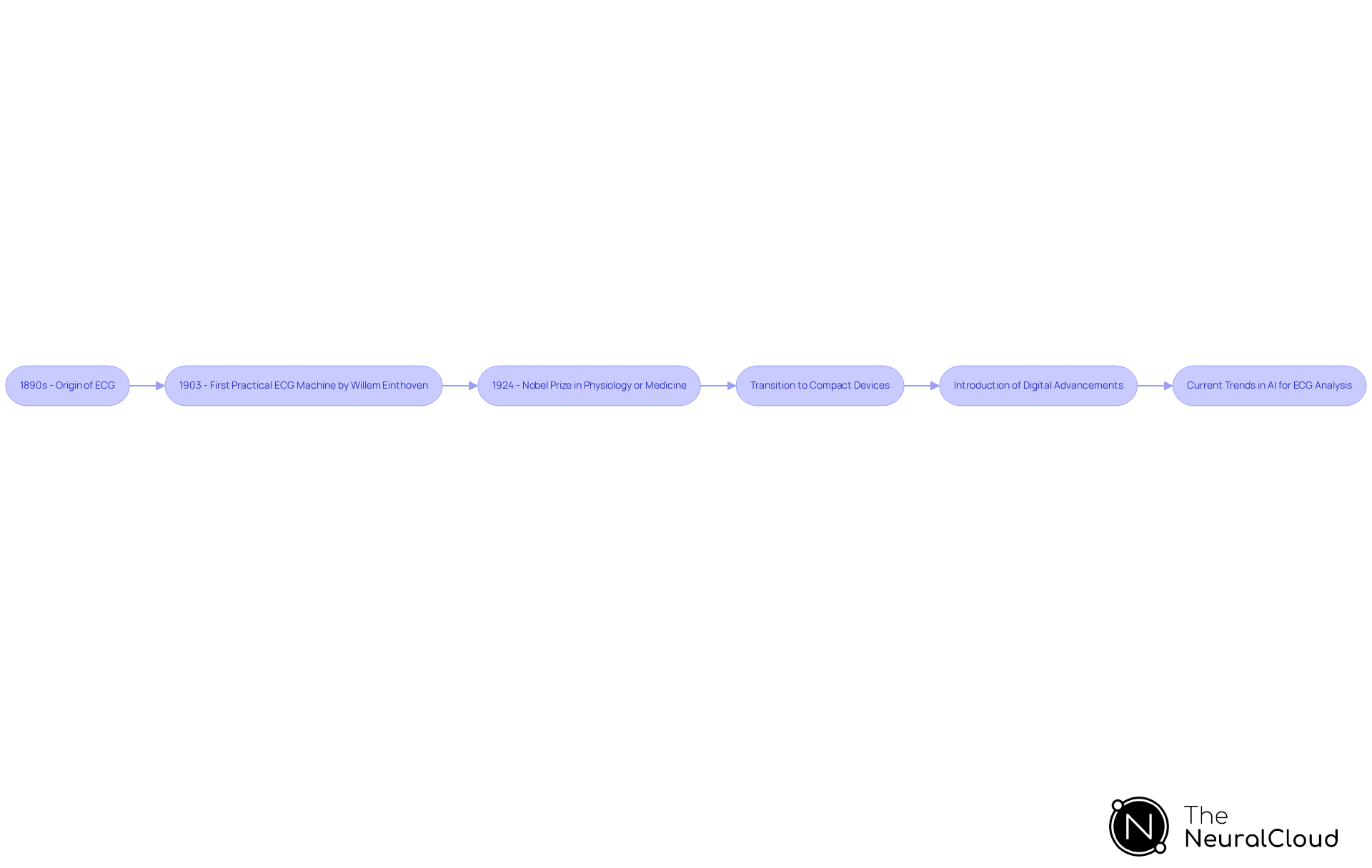
Identify Key Components: Understanding ECG Waveforms and Intervals
An ECG que es waveform comprises several essential components: the P-wave, QRS complex, and T-wave. The P-wave signifies atrial depolarization, the QRS complex indicates ventricular depolarization, and the T-wave represents ventricular repolarization. Each component offers critical insights into the heart's electrical activity and overall health. Additionally, intervals such as the PR interval, QRS duration, and QT interval are vital for evaluating cardiac function. For instance, the QRS duration reflects the time taken for ventricular depolarization; shorter durations suggest normal conduction, while wider durations may indicate potential conduction disturbances. Understanding these intervals, which relates to what ECG que es, is crucial for diagnosing heart conditions, as a prolonged QTc interval can lead to electrical instability, increasing the risk of lethal arrhythmias. Furthermore, the U-wave, which appears occasionally after the T-wave, is important for a complete understanding of ECG waveforms.
Neural Cloud Solutions' MaxYield™ platform revolutionizes ECG analysis by employing advanced noise filtering and distinct wave recognition capabilities. This technology enables rapid isolation of ECG waves from recordings compromised by baseline wander, movement, and muscle artifacts. Health tech developers can utilize MaxYield™ to salvage previously obscured sections of lengthy Holter, 1-Lead, and patch monitor recordings, enhancing the clarity and efficiency of ECG interpretation. Mastering these components is essential for creating algorithms that accurately analyze and interpret what ECG que es data means, ultimately improving diagnostic tools and patient care. Recent studies underscore the importance of these intervals, demonstrating that knowledge of normal ECG characteristics is fundamental for effective interpretation and timely management of cardiac conditions. As one expert noted, 'Mastery of these elements underpins accurate diagnosis and timely management of everything from benign findings to rapidly fatal conditions.
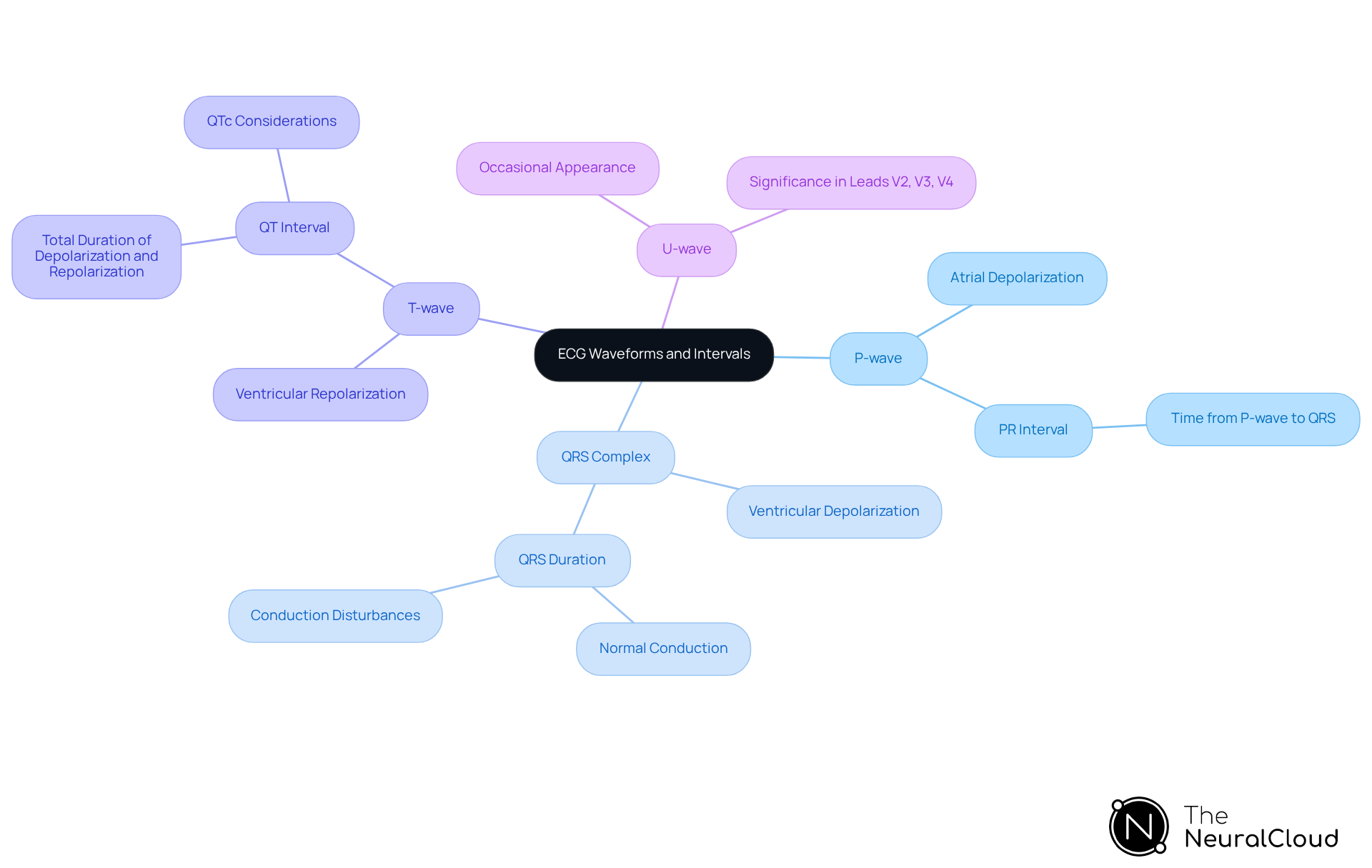
Conclusion
The electrocardiogram (ECG) serves as a crucial diagnostic instrument, integral to monitoring heart health and identifying cardiovascular conditions. Its capacity to record the heart's electrical activity offers essential insights for healthcare professionals and health tech developers alike. Leveraging advancements in technology, particularly innovations such as Neural Cloud Solutions' MaxYield™, the ECG is evolving to improve both accuracy and efficiency in cardiac diagnostics.
Understanding the fundamentals of ECG, including its waveforms and intervals, is paramount. The historical evolution of ECG technology illustrates a remarkable transition from cumbersome machines to advanced digital systems, demonstrating how these innovations have enhanced patient outcomes and healthcare delivery. Moreover, the incorporation of remote patient monitoring solutions is transforming cardiac care, underscoring the ECG's significance in modern health tech applications.
As the healthcare sector increasingly adopts technological advancements, the ECG continues to be a foundational element of cardiac health monitoring. Health tech developers are urged to utilize these innovations to create solutions that support the early detection and management of heart diseases. The ongoing progression of ECG technology not only aims to bolster diagnostic capabilities but also highlights the essential role that timely and accurate cardiac assessments play in saving lives.
Frequently Asked Questions
What is an ECG?
An ECG, or electrocardiogram, is a medical diagnostic tool that records the electrical activity of the heart over time by placing electrodes on the skin to capture the heart's electrical signals, resulting in a graphical representation known as an electrocardiogram.
What information does an ECG provide?
An ECG provides essential information about the heart's rhythm, size, and position, making it indispensable for diagnosing various cardiovascular conditions.
What are the main components of an ECG waveform?
The main components of an ECG waveform include P waves, QRS complexes, and T waves, each representing different phases of the heart's electrical cycle.
How common are ECGs performed globally?
Approximately 400 million ECGs are performed each year worldwide, highlighting the widespread application of this method in cardiac diagnostics.
What advancements are being made in ECG technology?
Advancements in ECG technology include the integration of artificial intelligence and machine learning, such as the MaxYield™ solution from Neural Cloud Solutions, which improves the accuracy and efficiency of ECG analysis through advanced noise filtering and automated labeling.
What challenges does the MaxYield™ technology address?
MaxYield™ addresses challenges like physiological variability and signal artifacts, allowing healthcare professionals to make informed decisions based on reliable cardiac information.
Why is the ECG important in diagnosing cardiovascular conditions?
The ECG is important because it can reveal structural cardiovascular conditions that might otherwise go unnoticed, allowing for timely treatment that can save lives.
How do innovations in ECG technology impact patient outcomes?
Innovations, such as adaptive algorithms in MaxYield™, evolve with each use to improve patient outcomes and optimize clinical workflows by enhancing the reliability of cardiac diagnostics.

